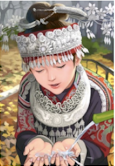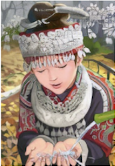Page Summary
-
Generative Adversarial Networks (GANs) are evolving with new techniques and applications, including progressive growing and conditional generation.
-
GANs are capable of diverse tasks such as image-to-image translation (e.g., CycleGANs turning horses into zebras), text-to-image synthesis, and super-resolution.
-
They can also be applied to tasks like face inpainting by filling in missing parts of images and even text-to-speech synthesis.
-
While impressive, GANs still have limitations, such as difficulty in reproducing fine details and the need for large datasets.
Researchers continue to find improved GAN techniques and new uses for GANs. Here's a sampling of GAN variations to give you a sense of the possibilities.
Progressive GANs
In a progressive GAN, the generator's first layers produce very low resolution images, and subsequent layers add details. This technique allows the GAN to train more quickly than comparable non-progressive GANs, and produces higher resolution images.
For more information see Karras et al, 2017.
Conditional GANs
Conditional GANs train on a labeled data set and let you specify the label for each generated instance. For example, an unconditional MNIST GAN would produce random digits, while a conditional MNIST GAN would let you specify which digit the GAN should generate.
Instead of modeling the joint probability P(X, Y), conditional GANs model the conditional probability P(X | Y).
For more information about conditional GANs, see Mirza et al, 2014.Image-to-Image Translation
Image-to-Image translation GANs take an image as input and map it to a generated output image with different properties. For example, we can take a mask image with blob of color in the shape of a car, and the GAN can fill in the shape with photorealistic car details.
Similarly, you can train an image-to-image GAN to take sketches of handbags and turn them into photorealistic images of handbags.

In these cases, the loss is a weighted combination of the usual discriminator-based loss and a pixel-wise loss that penalizes the generator for departing from the source image.
For more information, see Isola et al, 2016.
CycleGAN
CycleGANs learn to transform images from one set into images that could plausibly belong to another set. For example, a CycleGAN produced the righthand image below when given the lefthand image as input. It took an image of a horse and turned it into an image of a zebra.

The training data for the CycleGAN is simply two sets of images (in this case, a set of horse images and a set of zebra images). The system requires no labels or pairwise correspondences between images.
For more information see Zhu et al, 2017, which illustrates the use of CycleGAN to perform image-to-image translation without paired data.
Text-to-Image Synthesis
Text-to-image GANs take text as input and produce images that are plausible and described by the text. For example, the flower image below was produced by feeding a text description to a GAN.
| "This flower has petals that are yellow with shades of orange." |  |
Note that in this system the GAN can only produce images from a small set of classes.
For more information, see Zhang et al, 2016.
Super-resolution
Super-resolution GANs increase the resolution of images, adding detail where necessary to fill in blurry areas. For example, the blurry middle image below is a downsampled version of the original image on the left. Given the blurry image, a GAN produced the sharper image on the right:
| Original | Blurred | Restored with GAN |
 |
 |
 |
The GAN-generated image looks very similar to the original image, but if you look closely at the headband you'll see that the GAN didn't reproduce the starburst pattern from the original. Instead, it made up its own plausible pattern to replace the pattern erased by the down-sampling.
For more information, see Ledig et al, 2017.
Face Inpainting
GANs have been used for the semantic image inpainting task. In the inpainting task, chunks of an image are blacked out, and the system tries to fill in the missing chunks.
Yeh et al, 2017 used a GAN to outperform other techniques for inpainting images of faces:
| Input | GAN Output |
 |
 |
Text-to-Speech
Not all GANs produce images. For example, researchers have also used GANs to produce synthesized speech from text input. For more information see Yang et al, 2017.